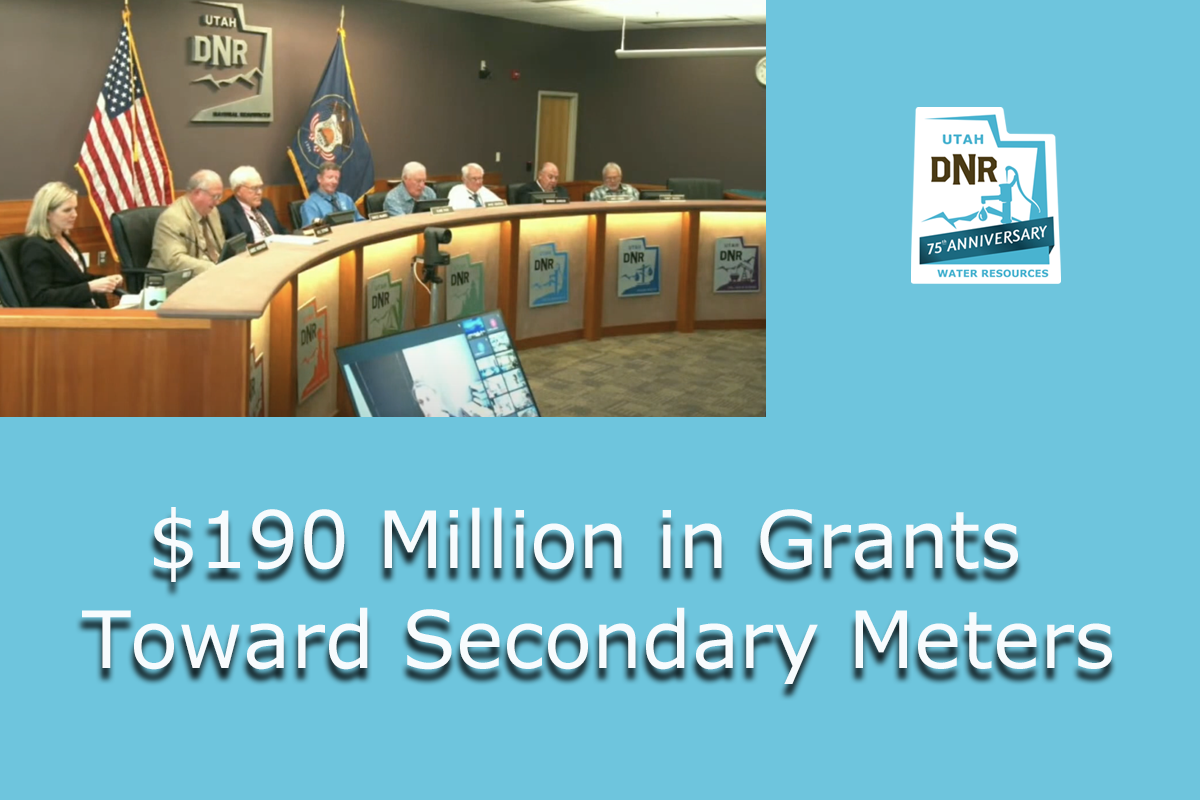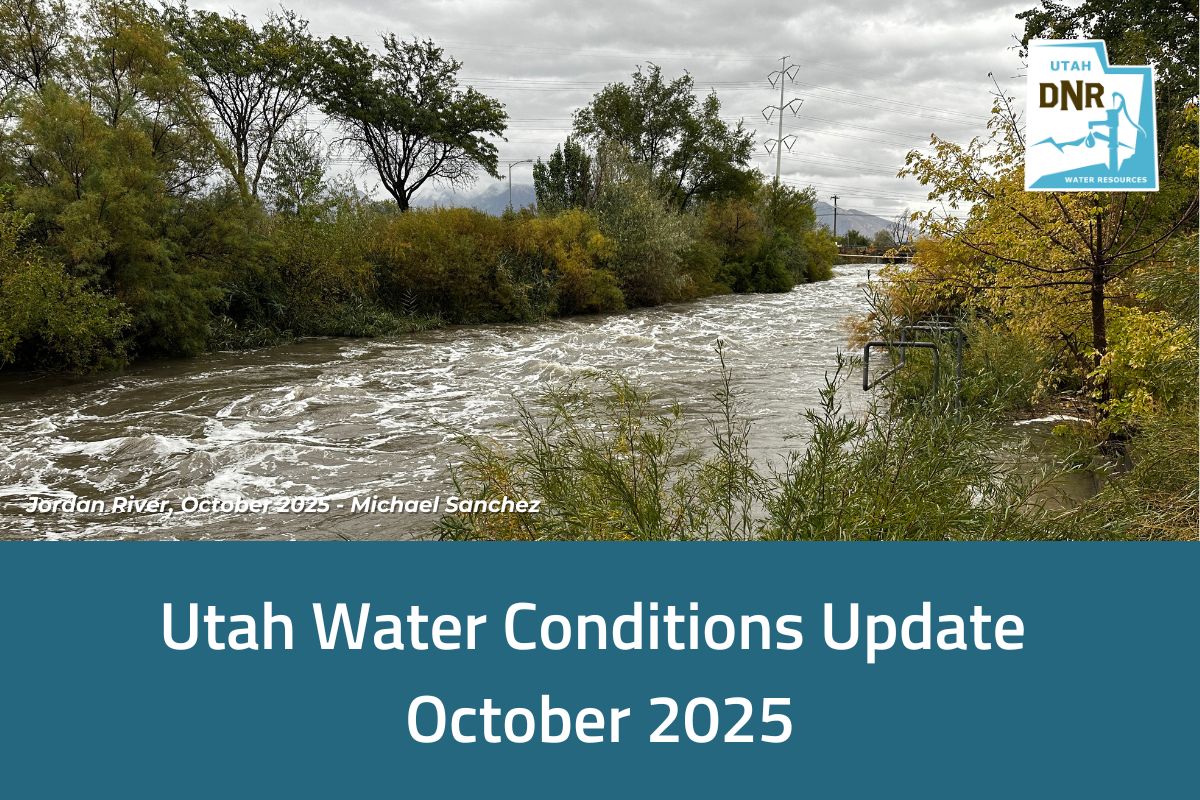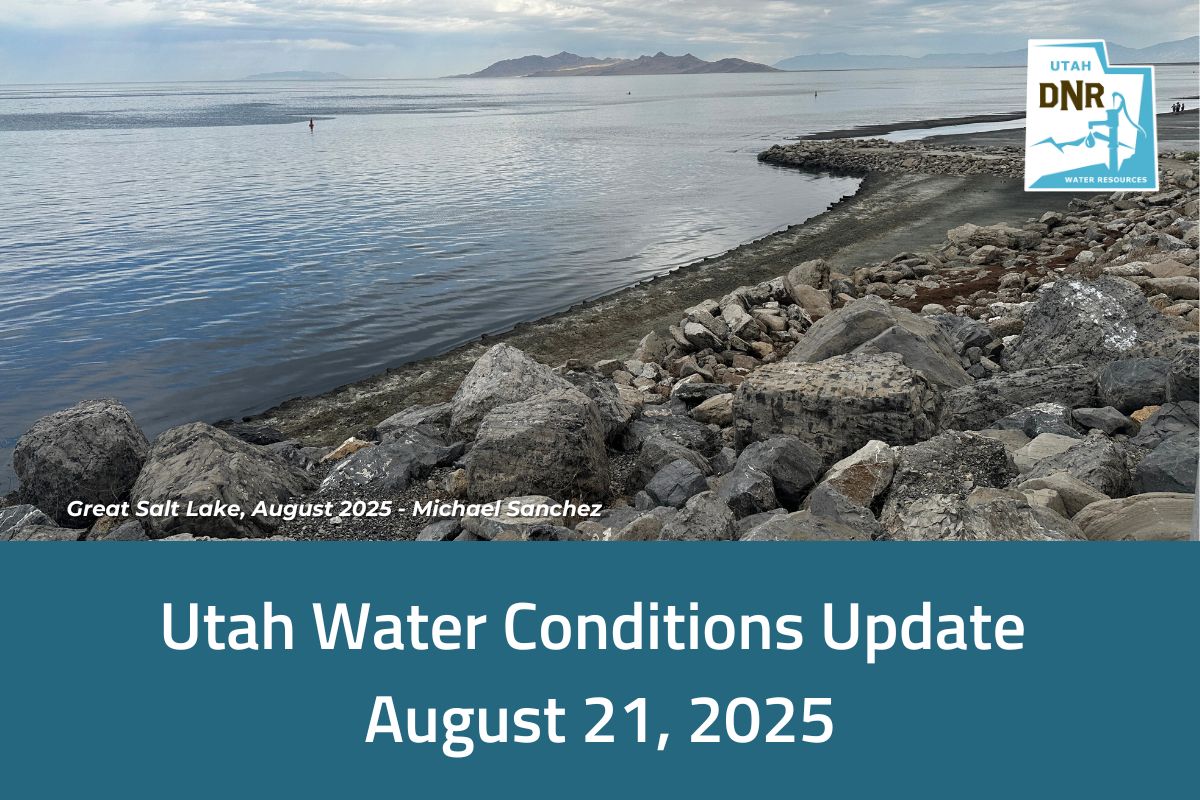August 4th was a historic day for the Board of Water Resources and the water community. There were 70 secondary metering grant applications before the Board. These funds will install an estimated 114,000 secondary water meters and conserve almost 54,000 acre-feet of water (about the size of East Canyon Reservoir). The Board still has around $60 million in grants funds still available for secondary meters. A third round of funding will be announced soon. For more info, visit our secondary meter grant page here.
Board of Water Resources Authorizes $190 Million in Grant Funds Toward Secondary Meters
SALT LAKE CITY (October 21, 2025) – The beginning of our Water Year, which began on Oct. 1, has delivered outstanding early-season precipitation. This historic moisture has profoundly improved water conditions and significantly boosted the outlook for our region’s water supply.
Read Full ArticleSALT LAKE CITY (Sept. 23, 2025) – The Water Development Coordinating Council will host four public meetings throughout the state in October to gather public input on the new Unified Water Infrastructure Plan (UWIP). These meetings are an opportunity for Utahns to learn more about the state’s new approach to funding water projects and to …
Continue reading “Public input sought for the new Unified Water Infrastructure Plan”
Read Full ArticleSALT LAKE CITY (August 21, 2025) – Utah’s reservoir levels are showing a drastic decline. Since June 1, the state has drawn down reservoirs at a rate more than double the normal rate. This is due to increased demand, lower-than-normal spring runoff and an extremely dry summer.
Read Full Article



